Ford Mustang (1999-2004) Service Manual: System Air Flow Description
MAX A/C
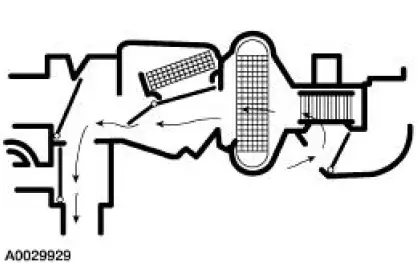
When MAX A/C is selected:
- The air inlet door vacuum control motor is at full vacuum, closing off outside air and admitting only recirculated air.
- The panel/defrost door vacuum control motor is at full vacuum and the panel/floor door vacuum control motor is at no vacuum, directing airflow to the instrument panel A/C registers. A small amount of airflow from the side window demisters will be present.
- Blended air temperature is available.
- The A/C compressor will operate if the outside temperature is above approximately 6C (43F).
- The blower motor is on.
NORM A/C
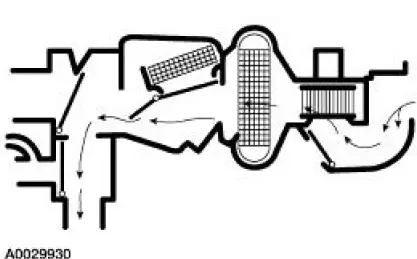
When NORM A/C is selected:
- The air inlet door vacuum control motor is at no vacuum, admitting only outside air into the passenger compartment.
- The panel/defrost door vacuum control motor is at full vacuum and the panel/floor door vacuum control motor is at no vacuum, directing airflow to the instrument panel A/C registers. A small amount of airflow from the side window demisters will be present.
- Blended air temperature is available.
- The A/C compressor will operate if the outside air temperature is above approximately 6C (43 F).
- The blower motor is on.
PANEL
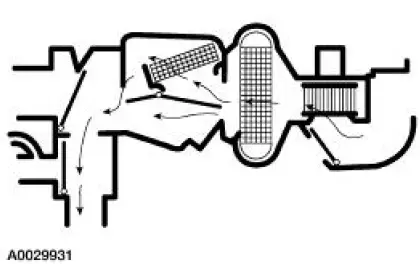
When PANEL is selected:
- The air inlet door vacuum control motor is at no vacuum, admitting only outside air into the passenger compartment.
- The panel/defrost door vacuum control motor is at full vacuum and the panel/floor door vacuum control motor is at no vacuum, directing airflow to the instrument panel A/C registers. A small amount of airflow from the side window demisters will be present.
- The temperature can be adjusted to heat the air, but the air cannot be cooled below the outside temperature.
- The A/C compressor will not operate.
- The blower motor is on.
OFF
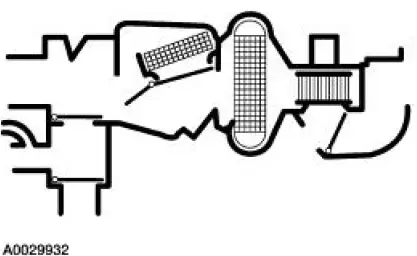
When OFF is selected:
- The air inlet door vacuum control motor is at full vacuum, closing off outside air from entering the passenger compartment.
- The panel/floor door vacuum control motor is at full vacuum and the panel/defrost door vacuum control motor is at no vacuum, closing off airflow to the defrost duct, side window demisters, floor duct and instrument panel A/C registers.
- The A/C compressor will not operate.
- The blower motor is off.
FLOOR
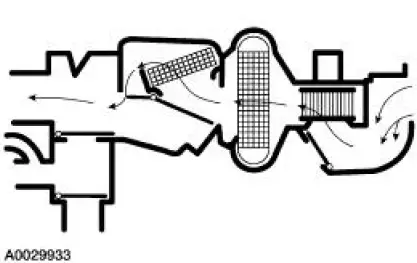
When FLOOR is selected:
- The air inlet door vacuum control motor is at no vacuum, admitting only outside air into the passenger compartment.
- The panel/floor door vacuum control motor is at full vacuum and the panel/defrost door vacuum control motor is at no vacuum, directing airflow to the floor duct. A small amount of airflow from the side window demisters will be present.
- The temperature can be adjusted to heat the air, but the air cannot be cooled below the outside temperature.
- The A/C compressor will not operate.
- The blower motor is on.
FLOOR/DEFROST
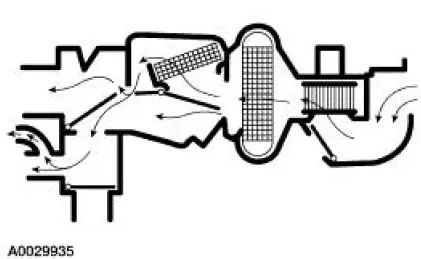
When FLOOR/DEFROST is selected:
- The air inlet door vacuum control motor is at no vacuum, admitting only outside air into the passenger compartment.
- The panel/floor door vacuum control motor is at partial vacuum and the panel/defrost door vacuum control motor is at no vacuum, directing airflow to the floor duct, the defroster duct, and the side window demisters.
- The temperature can be adjusted to heat or cool the air below the outside temperature.
- The A/C compressor will operate if the outside air temperature is above approximately 6C (43 F).
- The blower motor is on.
DEFROST
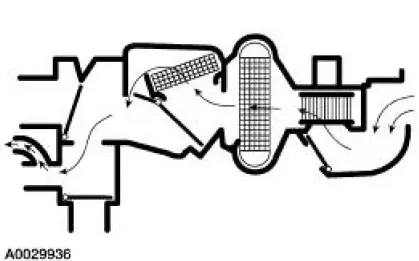
When DEFROST is selected:
- The air inlet door vacuum control motor is at no vacuum, admitting only outside air into the passenger compartment.
- The panel/floor door and panel/defrost door vacuum control motors are at no vacuum, directing airflow to the defroster duct and the side window demisters.
- The temperature can be adjusted to heat or cool the air below the outside temperature.
- The A/C compressor will operate if the outside air temperature is above approximately 6C (43 F).
- The blower motor is on.
Electrical Components
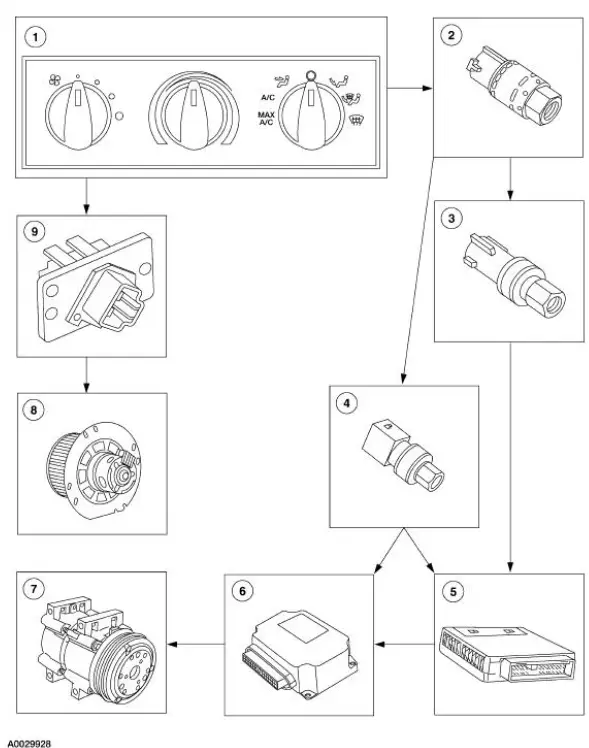
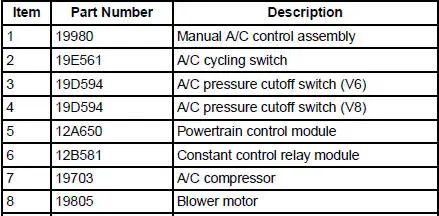

 Principles of Operation
Principles of Operation
There are four main principles involved with the basic theory of
operation:
heat transfer
latent heat of vaporization
relative humidity
effects of pressure
Heat Transfer
If two substan ...
 Climate Control System (Diagnosis and Testing)
Climate Control System (Diagnosis and Testing)
Refer to Wiring Diagrams Cell 54 , Air Conditioner/Heater for schematic
and connector information.
Special Tool(s)
Connector, Refrigerant
Pressure Line
412-093 (T94P-19623-E)
...
Other materials:
Bleeding - Components
Special Tool(s)
Worldwide Diagnostic System
(WDS)
418-F224, New Generation STAR (NGS)
Tester
418-F052, or equivalent scan
tool
NGS Flash Cable
418-F120 (007-00531) or
Equivalent
...
Principles of Operation
The speed control system is designed to maintain vehicle speed above 48 km/h
(30 mph). After the
ON switch is depressed, depressing the SET/ACCEL switch will activate the speed
control servo. To
increase a set speed, either depress and hold for continuous ac ...
Pinpoint Tests
PINPOINT TEST P1464: DTC P1464: A/C DEMAND OUT OF SELFTEST
RANGE
Test Step
Result / Action to Take
P14641 RECHECK FOR THE DTC
YesGO to P14642 .
No
The system is functioning
correctly. This DTC will set if the
A/C is turned on when carryi ...
